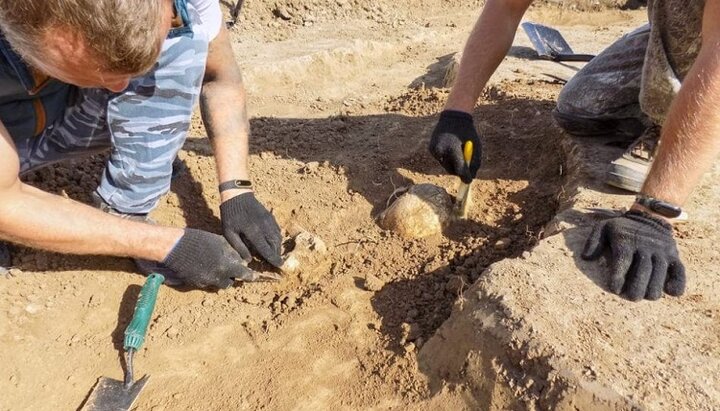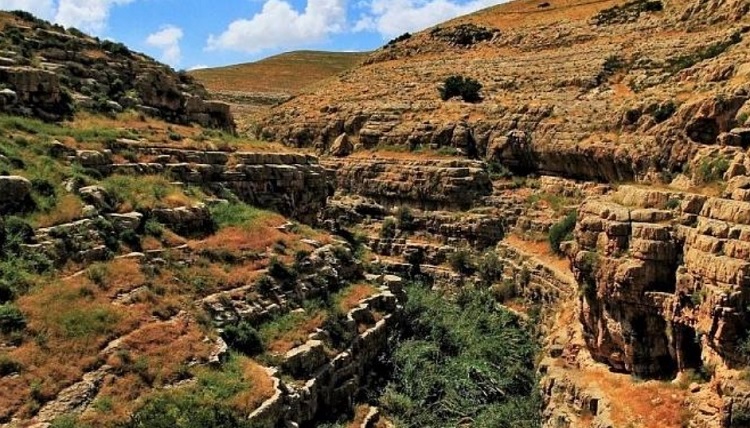Experts name biblical archaeology’s top 10 discoveries of 2021

Archaeologists at work. Photo: cursorinfo.co.il
Experts have listed 10 major discoveries of biblical archaeology in 2021, reports the website "Christianity Today". The list of artefacts includes:
10. Herod the Great’s green thumb
Miniature pine, cypress, cedar, and olive trees grew in clay pots that were originally recovered by archaeologist Ehud Netzer half a century ago. Many of the tree species would not typically have grown in the desert around Jericho, making the garden a demonstration of Herod’s greatness, a horticultural feat to impress guests and subjects.

9. Herod’s seaside entertainment complex
The Israel Antiquities Authority announced the rediscovery and preservation of Herod the Great’s basilica in Ashkelon. The huge edifice, larger than a football field, was first excavated over a century ago but is now being re-excavated and developed to attract visitors to the Tel Ashkelon National Park. The final reconstruction will include a small ancient theatre called an odeon, marble pillars and capitals, and huge marble statues of pagan deities.

8. A biblical pharaoh’s border monument
Discovered in a farmer’s field in northeastern Egypt, this inscribed monument bears the name of one of the few pharaohs actually named in the Old Testament. The stele contains 15 lines of hieroglyphics, so far untranslated.
7. An unknown Egyptian city
Archaeologists announced the discovery of a previously unknown city on the west bank of the Nile near Luxor. Believed to be one of the largest Egyptian cities ever unearthed, it dates to the reign of Pharaoh Amenhotep III. This pharaoh was the grandfather of Tutankhamun but, more importantly perhaps, the grandson of Amenhotep II, believed by many evangelical scholars to be the pharaoh of the Exodus.
6. A crucifixion foot
The Roman practice of crucifixion is well known from ancient sources, including the Gospel accounts of Jesus’ death. But up until this month, the only archaeological evidence of crucifixion had been found in a burial cave in Israel in 1986. In early December, it was announced that a skeleton had been excavated from a grave at Fenstanton in Cambridgeshire, England. The remains had a nail driven into the back of the right foot. The burial dates to around A.D. 400, during the Roman occupation of England.
5. Dead Sea discoveries
The Israel Antiquities Authority announced the results of a four-year excavation project in hard-to-reach caves overlooking the Dead Sea. Finds included arrowheads, coins, combs, the mummified remains of a young girl, and dozens of scraps of biblical texts. The scroll fragments, containing passages from Zechariah and Nahum, are unrelated to the texts produced by the Qumran community, known as the Dead Sea Scrolls. They nonetheless shed light on the long work of translating and transcribing Scripture.
For archaeologists, the most amazing discovery was a 10,500-year-old basket. The basket, complete with an intact lid, dates to the pre-pottery Neolithic period, making it the oldest basket in existence. It is reminiscent of the biblical baskets, such as the that helped the apostle Paul escape persecution when he was lowered over the wall of Damascus.
4. Artifacts in Yavne
The modern city of Yavne, located between Tel Aviv and Ashdod, has been a prolific site for archaeological amazing discoveries in 2021. Archaeologists uncovered five huge winepress production areas, each over half the size of a basketball court, along with four huge warehouses and kilns for firing wine storage jars. They also found older winepresses from the Persian period, dated to around 300 B.C.
3. A Temple Mount banquet hall
A luxurious public building located next to the Temple Mount has been excavated and opened to public tours. Part of the building was first discovered by British archaeologist Charles Warren in 1867, and the site was partially excavated in 1966. Now that the excavation is complete, archaeologists have dated its construction to A.D. 20—during the lifetime of Jesus. Archaeologists say it was damaged by an earthquake in A.D. 33. The destruction date suggests possible evidence of the earthquake recorded in the Gospel accounts at the crucifixion of Jesus.
2. Gideon’s jug
The artefact was excavated at Khirbat er-Ra'i, a site near Tel Lachish in southern Israel. It is unlikely the jug belonged to Gideon himself. The archaeologists excavating at Khirbat er-Ra'i dated the stratum where the pottery was found to 1100 B.C., the period of the judges, but likely about a century after Gideon, based on the internal chronology of the Bible. There is a little archaeological record of this period, though, so the discovery linking a biblical name to the era is notable.
1. A second synagogue in Magdala
The University of Haifa announced the discovery of another first-century synagogue at Magdala in late December, located on the northwestern shore of the Sea of Galilee. The first synagogue in Magdala was opened more than ten years ago. Experts believe that these were the synagogues that Jesus visited during his ministry (Matt. 4:23).
As reported, archaeologists discovered a 2,000-year-old synagogue in Mary Magdalene's homeland.
Read also
Bulgarian Church warns of the danger of "spiritual teachers"
The Church categorically rejects attempts to present Christ as one of many "spiritual teachers" or as an "incarnation" of the Hindu deity Krishna.
Dumenko awards DESS expert with order
The head of the OCU discussed interfaith dialogue with Fylypovych.
Military Recruitment Office detains UOC seminary student in Kyiv
Pavlo Vasilevskyi was detained while he was on his way home after the service.
In Africa, Islamists kill over 22,000 people in a year, mostly Christians
The study was conducted against the backdrop of an attack on Christians in a church in the city of Komanda in eastern Congo.
Kyiv Court of Appeal rejects UOC cathedral community's complaint in Volodymyr
The decision can be appealed in the Cassation Commercial Court.
In Chernivtsi, TRC employees abduct UOC priest
A cleric of the Chernivtsi Eparchy was taken to the territorial center.
